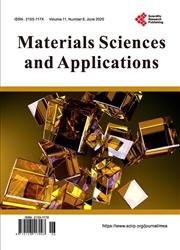Effect of Thermal Shrinkage of Extruded Sheet on Mouthguard Thickness: Influence of Model Undercut
引用次数: 0
Abstract
The effectiveness and safety of the mouthguard are greatly affected by its thickness. The aim of this study was to investigate the effect of thermal shrinkage of the extruded sheet on the mouthguard thickness depending on the amount of undercut of the model. Mouthguard sheet was used a 4.0 mm thick eth-ylene-vinyl acetate resin manufactured by extrusion molding. The sheets were placed in the vacuum forming machine with the sheet extrusion direction ei-ther vertical (condition V) or parallel (condition P) to the model’s centerline. The working models were three hard plaster models trimmed so that the angles of the anterior teeth to the model base were 90˚, 100˚, and 110˚ (Models A, B, and C). The sheet was softened until it sagged 15 mm, and then suction was continued for 30 s. Measurement points of the mouthguard were the incisal portion (incisal edge and labial surface) and molar portion (cusp and buccal surface). The differences in the reduction rate of the thickness due to model form and extrusion direction were analyzed using two-way ANOVA and Bonferroni’s multiple comparison tests. Differences in thickness depending on the extrusion direction of the sheet were observed in Models B and C on the labial surface and in all models on the buccal surface, and the thicknesses obtained under condition P were significantly thinner than those obtained under condition V. The thicknesses of the incisal edge and the cusp were not affected by the extrusion direction. The result of挤压板热收缩对护齿厚度的影响:模型下切的影响
护齿器的厚度对其有效性和安全性有很大影响。本研究的目的是研究挤压板的热收缩对护齿厚度的影响,这取决于模型的下切量。护齿板采用挤压成型的4.0 mm厚eth-乙烯-醋酸乙烯树脂。将板材置于真空成型机中,板材挤压方向与模型中心线垂直(条件V)或平行(条件P)。工作模型为3个硬石膏模型,修整后使前牙与模型底座的夹角分别为90˚、100˚和110˚(模型A、B、C)。将板材软化至下垂15 mm,然后继续吸吸30 s。护齿器的测量点为切牙部分(切缘和唇面)和磨牙部分(尖牙和颊面)。采用双因素方差分析和Bonferroni多重比较检验分析模型形状和挤压方向对厚度减小率的影响。B、C模型在唇面和所有模型在颊面均观察到不同挤压方向的厚度差异,且P条件下得到的厚度明显比v条件下得到的厚度薄,切缘和尖部的厚度不受挤压方向的影响。的结果
本文章由计算机程序翻译,如有差异,请以英文原文为准。
求助全文
约1分钟内获得全文
求助全文

 求助内容:
求助内容: 应助结果提醒方式:
应助结果提醒方式:


